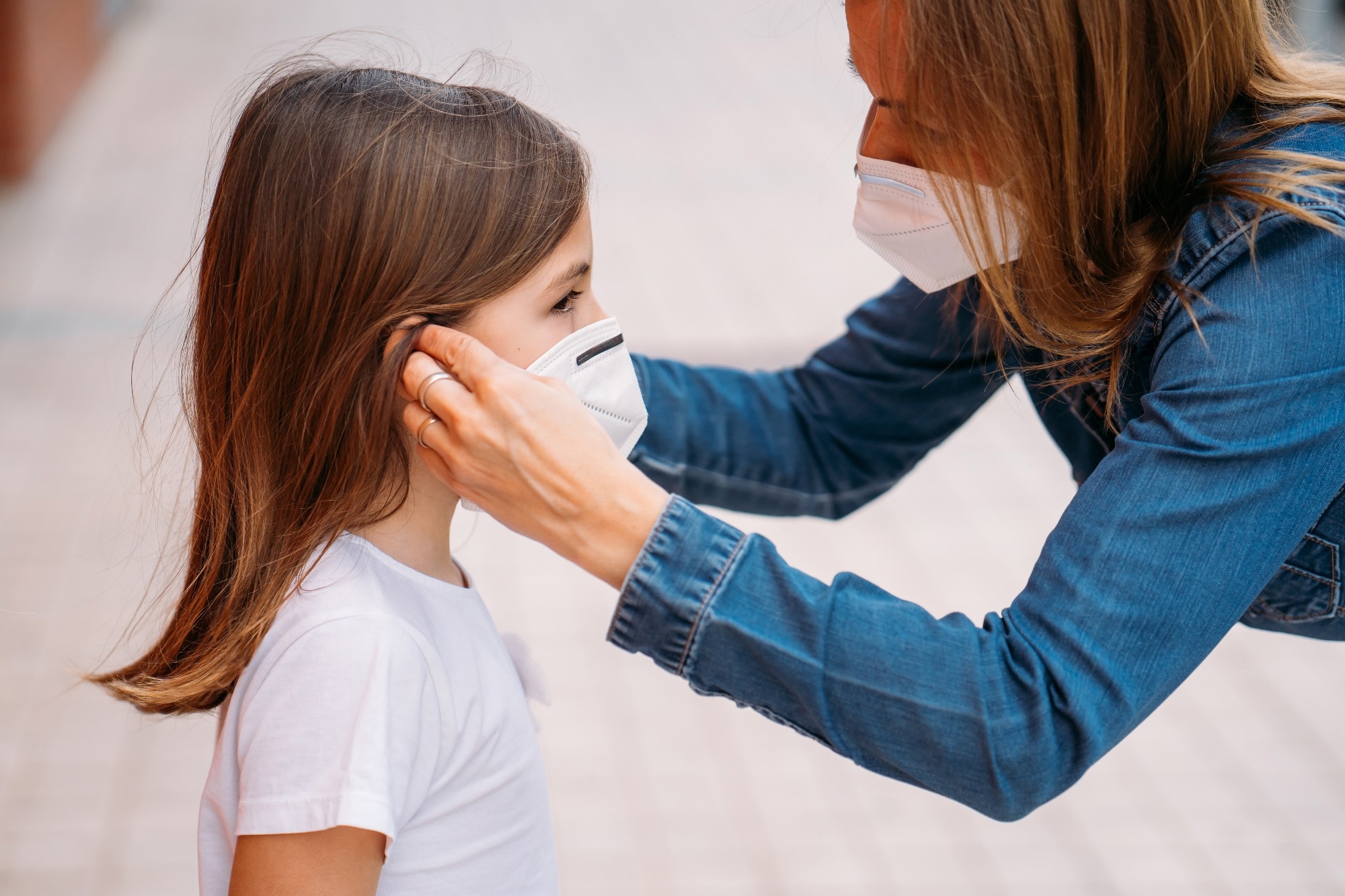A recent study published in the journal Emerging Infectious Diseases evaluates infection rates of severe acute respiratory syndrome coronavirus 2 (SARS-CoV-2) variants of concern (VOCs) among close contacts.
 Study: SARS-CoV-2 variants and age-dependent infection rates among household and nonhousehold contacts. Image Credit: Manu Padilla / Shutterstock.com
Study: SARS-CoV-2 variants and age-dependent infection rates among household and nonhousehold contacts. Image Credit: Manu Padilla / Shutterstock.com
The evolution of SARS-CoV-2 variants
Despite global vaccination efforts, the emergence of novel and immune-evasive SARS-CoV-2 VOCs have caused numerous epidemic waves since the start of the coronavirus disease 2019 (COVID-19) pandemic.
More recently, the SARS-CoV-2 Omicron variant has been shown to elicit a higher household secondary attack rate as compared to the previously dominant Alpha and Delta variants. The susceptibility and transmissibility of SARS-CoV-2 Delta and Omicron variants vary among studies, with children often considered to be more susceptible to these viral variants as compared to adults.
The rates of SARS-CoV-2 infection among close contacts vary by study design, non-pharmacological interventions, contact patterns, and site settings. Thus, using consistent methodologies to assess infection rates among contacts in the same population and geographic location could offer more reliable estimates of how VOCs and age impact the risk of SARS-CoV-2 transmission.
About the study
In the present study, researchers examine the effects of SARS-CoV-2 VOCs and age on transmission risk.
To this end, clinical data and activity history on COVID-19 cases and their contacts in Toyama Prefecture, Japan, during pre-VOC, Alpha, Delta, and Omicron periods were obtained through telephonic interviews. These periods spanned from July 1, 2020, to October 31, 2020, April 1, 2021, to April 30, 2021, July 3, 2021, to August 15, 2021, and January 3, 2022, to January 23, 2022, respectively.
According to the United States Centers for Disease Control and Prevention (CDC), a close contact is defined as someone who was less than six feet away from an individual with laboratory-confirmed COVID-19 for 15 minutes or more over a 24-hour period.
Comparatively, for the purpose of the current study, close contacts included individuals who had been in contact with COVID-19-positive individuals from two days before the onset of symptoms until their own clinical diagnosis. This definition of a close contact was based on the guidelines provided by the National Institute of Infectious Diseases of the Japan Ministry of Health, Labor, and Welfare.
Contacts were stratified into non-household and household contacts and were tested for COVID-19, irrespective of symptom status. Baseline characteristics of index cases and contacts were obtained for each of the four study periods.
Odds ratios of infection rates were computed using generalized estimating equation (GEE) logistic regression. Additionally, estimated infection rates, which were calculated as the ratio of test-positive contacts to overall contacts, were determined.
Study findings
Overall, the researchers identified 1,057 cases and 3,820 close contacts. In the pre-VOC period, 123 cases and 530 contacts were reported, whereas the Alpha period comprised 246 cases and 988 contacts. In the Delta and Omicron waves, 304 cases and 984 contacts, and 84 cases and 1,318 contacts were reported, respectively.
Of these, 358 contacts without polymerase chain reaction (PCR) test results were excluded. Infection rates in the Omicron wave were 35% and 15.1% among household and non-household contacts, with 6.2- and 3.5-fold higher odds of infection than in the pre-VOC period, respectively, after adjusting for age, sex, symptoms, contact history, and household size.
A significant increase in the risk of infection from 3% to 38% was observed from the pre-VOC to Omicron periods, respectively, among household contacts, which included infants up to 19-year-olds. By contrast, infection rates for the same age group were lower among non-household contacts.
The rates of infection among household contacts aged 60 or older declined to about 12% in the Delta period but increased to 29% in the Omicron period. Furthermore, infectivity rates among individuals who were 60 or older were higher than those from other age groups.
Conclusions
The current study estimated that the odds of SARS-CoV-2 infection among household contacts were about 6.2 times higher in the Omicron period than in the pre-VOC period, with adolescents and children particularly susceptible to these viral variants. Despite a greater number of non-household contacts identified among those between the ages of a few months up to 19 years, non-pharmacological interventions and non-physical contact measures incorporated into daycare centers and schools might have contributed to fewer outbreaks and lower infection rates.
The increased infection rates reported during the Omicron period among those over the age of 60 may be the result of both waning immunity from COVID-19 vaccination and the close contact of this patient population with certain individuals, such as caregivers and nurses.
Taken together, the study findings emphasize the importance of continuously monitoring the infectivity of novel SARS-CoV-2 strains as they emerge, as well as evaluating susceptibility trends according to age and geographic location.
Journal reference:
- Miyahara, R., Tamura, K., Kato. T., et al. (2023). SARS-CoV-2 variants and age-dependent infection rates among household and nonhousehold contacts. Emerging Infectious Diseases. doi:10.3201/eid2908.221582